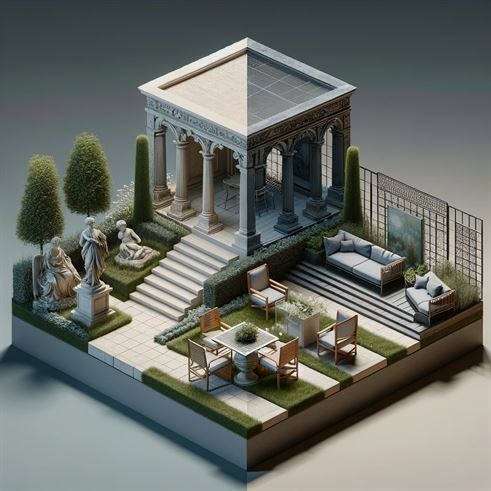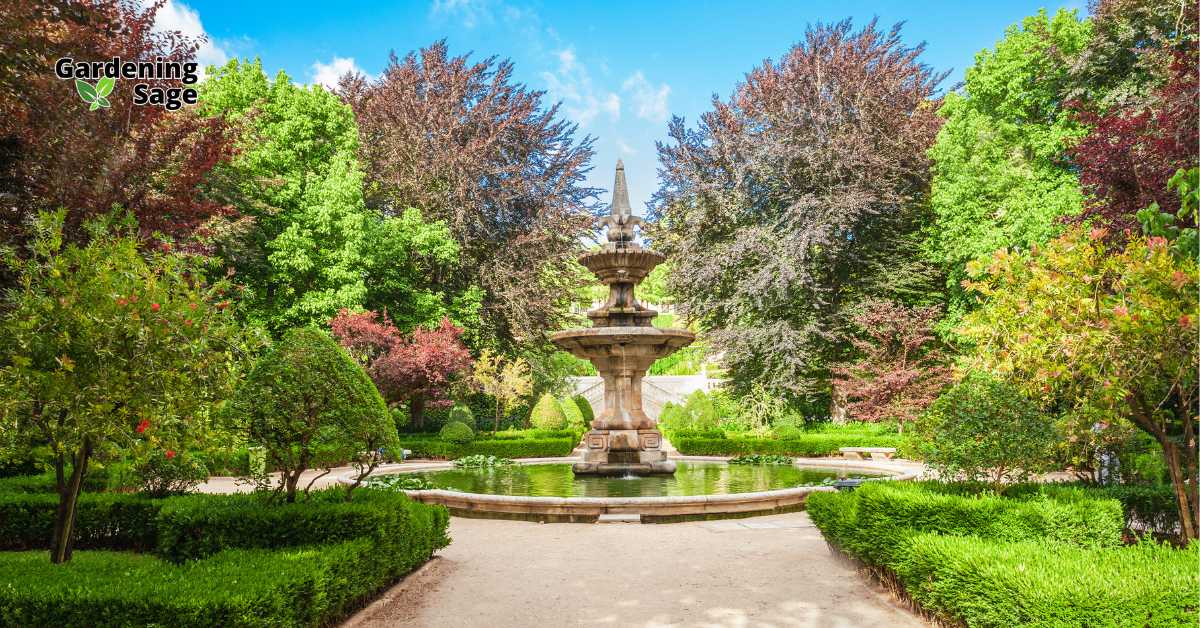Gardening is a timeless art, with roots that delve deep into the soils of history. Throughout the ages, gardens have been a symbol of beauty, status, and tranquility.
They have evolved through various cultures and styles, each leaving a lasting impression on the world of horticulture.
This comprehensive guide explores some of the most iconic historical gardens from around the globe, extracting lessons and inspiration for modern gardeners seeking to infuse their spaces with the charm and elegance of these timeless landscapes.

The Essence of Historical Gardens
Historical gardens are more than just collections of plants; they are expressions of the cultural, philosophical, and artistic ideals of their times. They range from the meticulously planned Renaissance gardens of Europe to the Zen-inspired landscapes of East Asia.
Each garden tells a unique story, offering a window into the past and insights that can be woven into the tapestry of modern gardens.
Versailles: The Apex of French Formal Gardens
The Gardens of Versailles are perhaps the most famous example of classical French garden design. Created for King Louis XIV, these gardens are a testament to human ingenuity and the desire to control and sculpt nature.
Their hallmark features, including symmetrical patterns, ornate fountains, and sculpted shrubs, can inspire elements of formality and grandeur in contemporary garden designs.
The English Cottage Garden: A Rustic Retreat
In contrast to the formality of French gardens, the English cottage garden is celebrated for its informal charm and naturalistic style.
Overflowing with a mix of flowers, herbs, and vegetables, these gardens emphasize abundance and a harmonious blend of function and beauty. They inspire modern gardeners to create spaces that feel lived-in and inviting, with a focus on biodiversity and ecological balance.
The Zen Gardens of Japan: Minimalism and Meditation
Japanese Zen gardens, known for their minimalist design and contemplative nature, offer a different perspective. These gardens use elements like rocks, gravel, and selectively placed plants to create a sense of tranquility and introspection.
Modern gardens can adopt this minimalist approach, emphasizing quality over quantity and seeking to create peaceful retreats amid busy lives.
The Mughal Gardens: A Fusion of Architecture and Nature
The Mughal gardens of India, exemplified by the Taj Mahal, blend architectural elements with naturalistic planting. They are known for their geometric layouts, water features, and abundant use of flowers and trees.
This style can inspire modern gardeners to incorporate architectural features like pathways, arches, and water elements to create a sense of structure and flow.
The Renaissance Gardens: Symmetry and Sculpture
Renaissance gardens, such as those at Villa d’Este in Italy, are known for their symmetry, classical sculptures, and elaborate water features. They reflect the humanist ideals of the Renaissance, emphasizing balance, proportion, and the blending of art and nature.
These principles can be adapted to modern gardens to add a sense of elegance and artistic expression.
The Chinese Scholar’s Garden: Harmony with Nature
Chinese scholar’s gardens are intimate spaces designed for contemplation and artistic inspiration. They often feature water, rocks, and pavilions, arranged to mimic natural landscapes.
The principle of creating harmony with nature can guide modern gardeners in designing spaces that are not only beautiful but also spiritually resonant.
The American Prairie Garden: Embracing the Wild
Inspired by the vast prairies of North America, prairie gardens focus on native grasses and wildflowers. They represent a move towards more sustainable, low-maintenance gardening, celebrating the beauty of the natural landscape.
This approach can inspire modern gardeners to use native plants and create gardens that require less water and care while supporting local wildlife.
Persian Gardens: The Quintessence of Paradise
Persian gardens, designed as symbols of paradise, are centered around water and shade. They often feature a quadrilateral layout with a water body at the center, surrounded by trees and aromatic plants. This style can inspire modern gardens with a focus on creating peaceful, oasis-like spaces, even in arid environments.
The Baroque Garden: Drama and Opulence
Baroque gardens, such as those at Schönbrunn Palace, are known for their dramatic designs, featuring sweeping vistas, intricate parterres, and bold water features. They reflect a love for the theatrical and can inspire modern gardeners to make bold statements, whether through striking plant choices or dramatic landscaping elements.
Incorporating Historical Elements into Contemporary Gardens
Drawing inspiration from historical gardens does not mean creating replicas in your backyard. Instead, it’s about adapting elements that resonate with you – be it the formality of a French garden, the tranquility of a Zen retreat, or the wildness of a prairie landscape.
It’s about blending the old with the new to create a garden that reflects your style and meets your practical needs.
Balancing Aesthetics and Sustainability
One of the key lessons from historical gardens is the balance between aesthetic appeal and sustainability. Many historical gardens were designed with their local environments in mind, using native plants and sustainable practices.
Modern gardeners can take a cue from this, creating gardens that are not only beautiful but also environmentally conscious.
Timeless Inspiration for Modern Spaces
Historical gardens offer a rich source of inspiration for today’s gardeners. From the grandeur of Renaissance gardens to the minimalism of Zen retreats, these timeless landscapes provide endless ideas for creating beautiful, meaningful, and sustainable gardens in our modern world.
By embracing the lessons of the past, we can create gardens that are not just spaces of beauty and relaxation but also reflections of history, culture, and our connection to the natural world.














